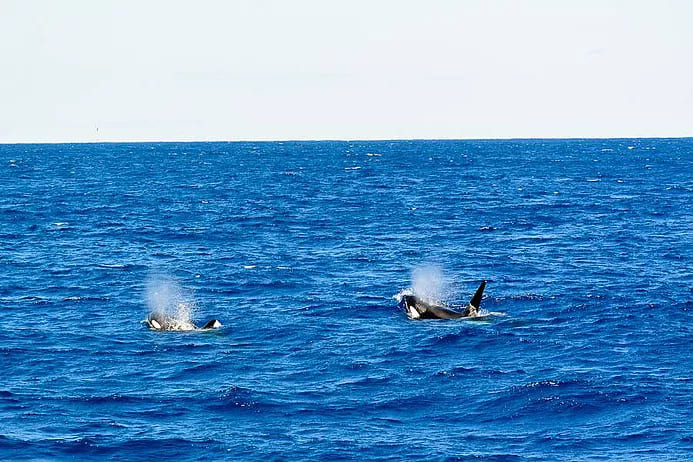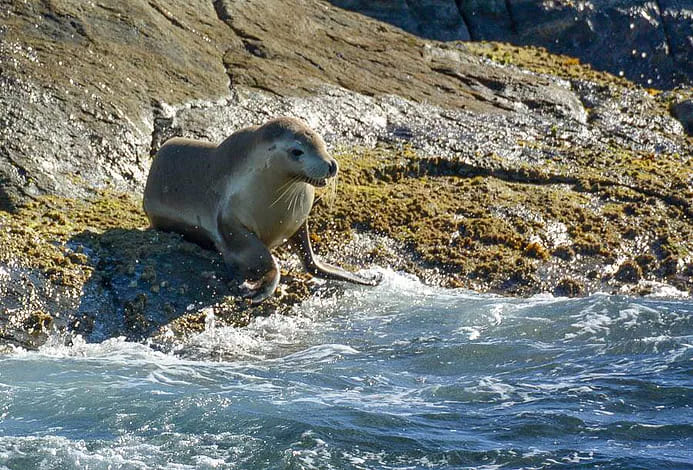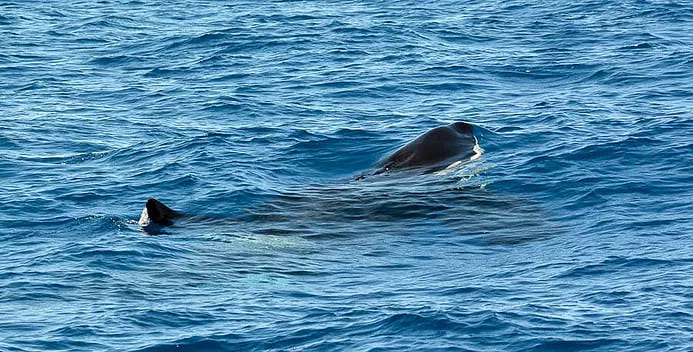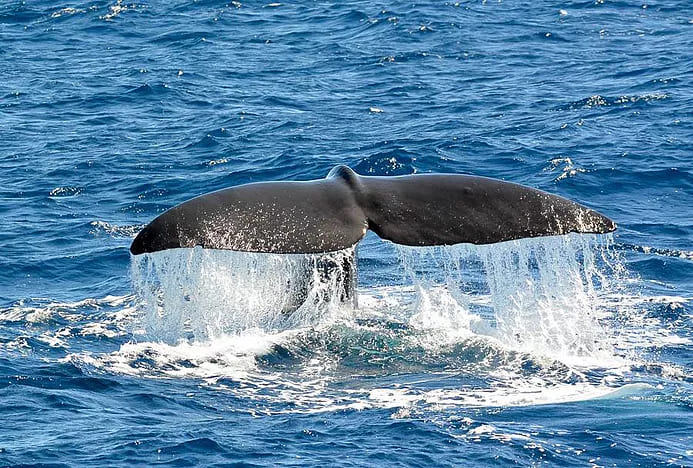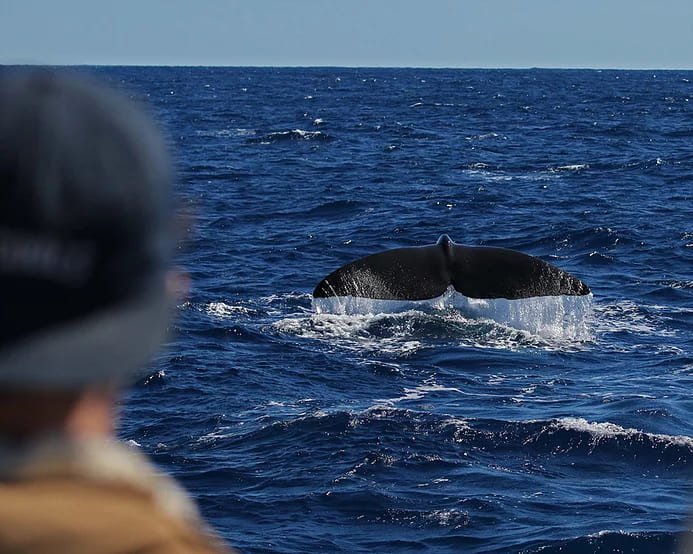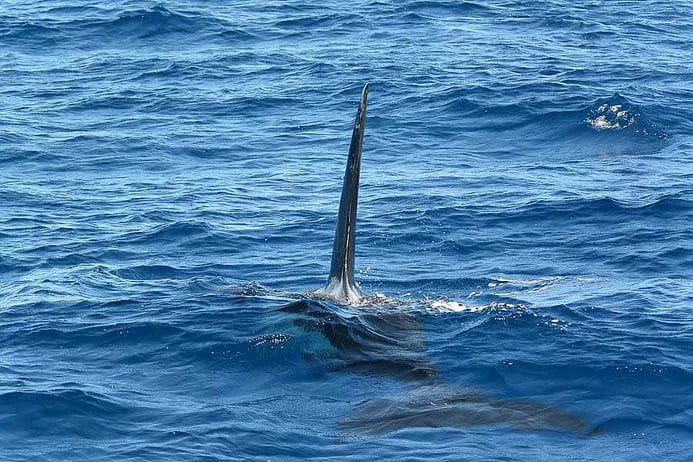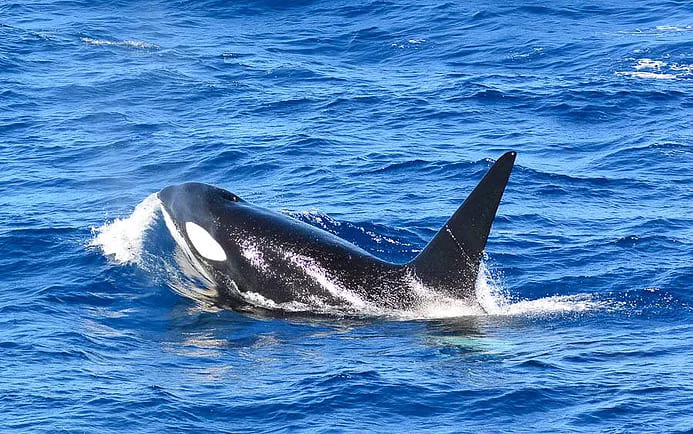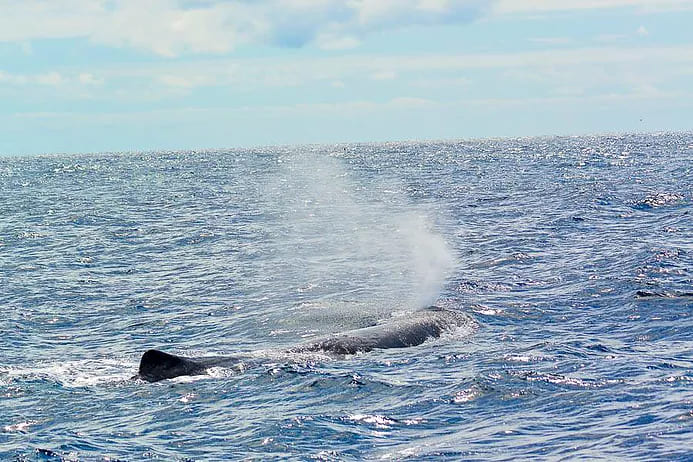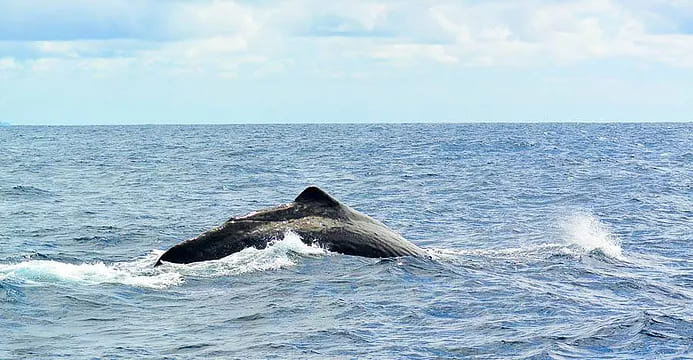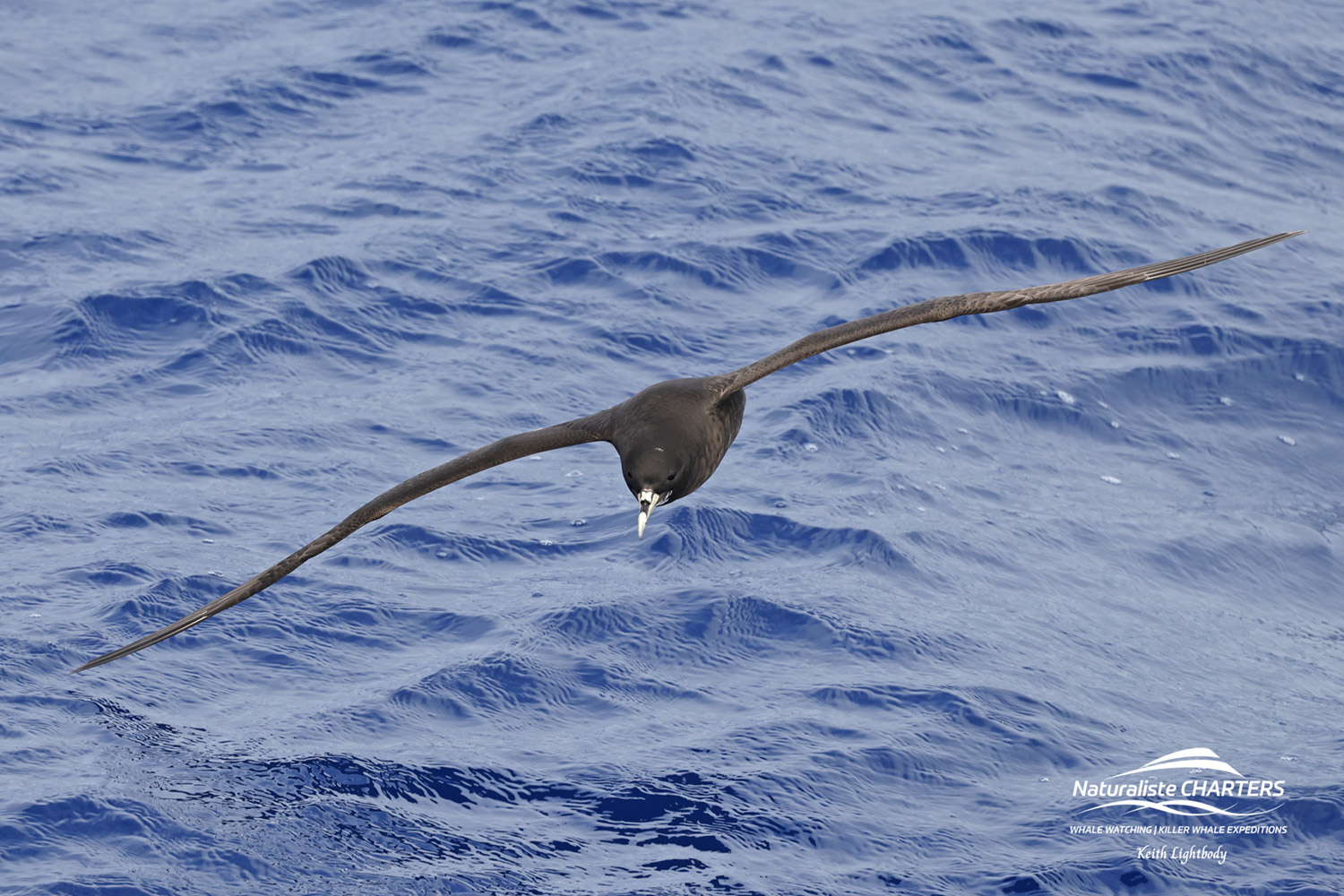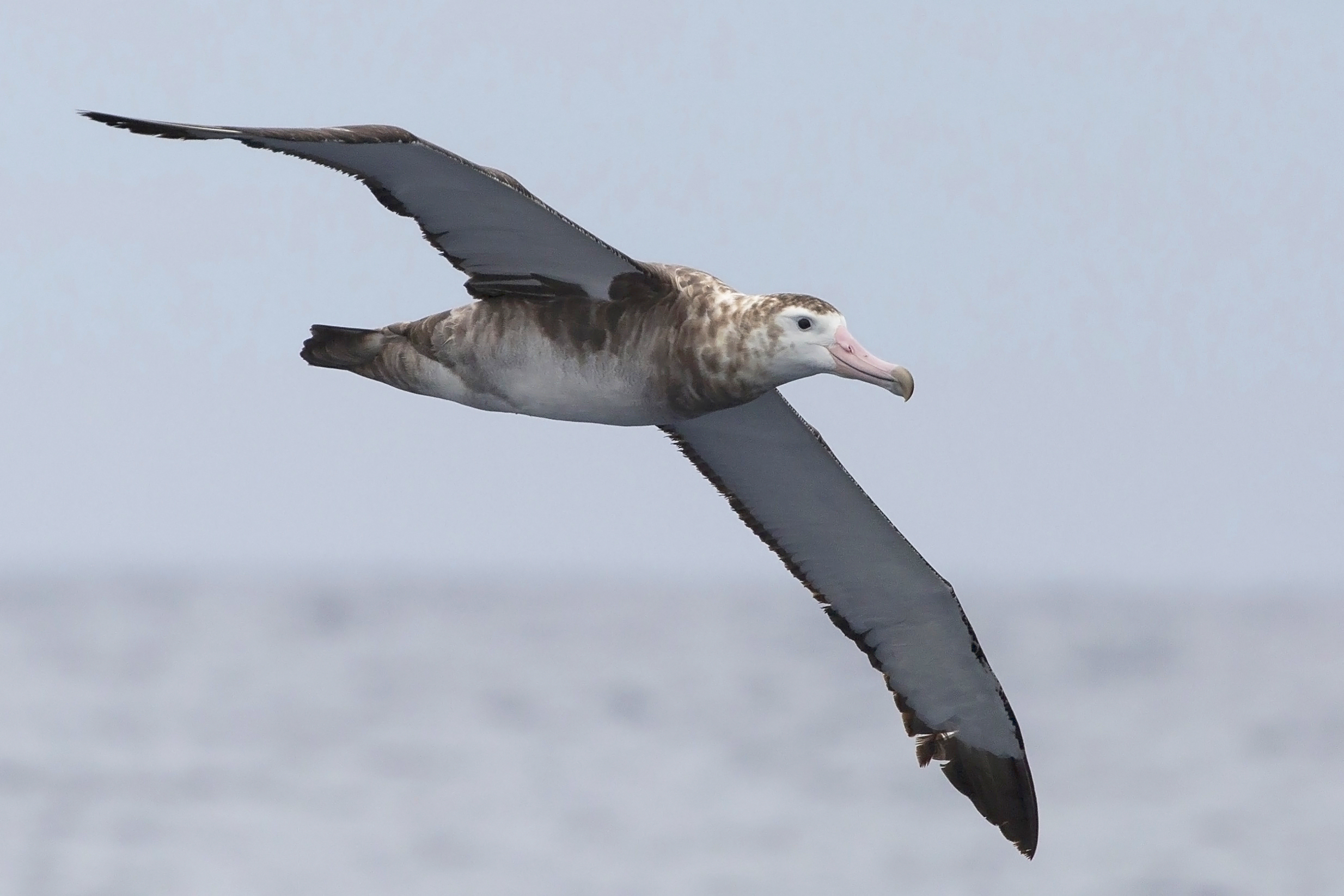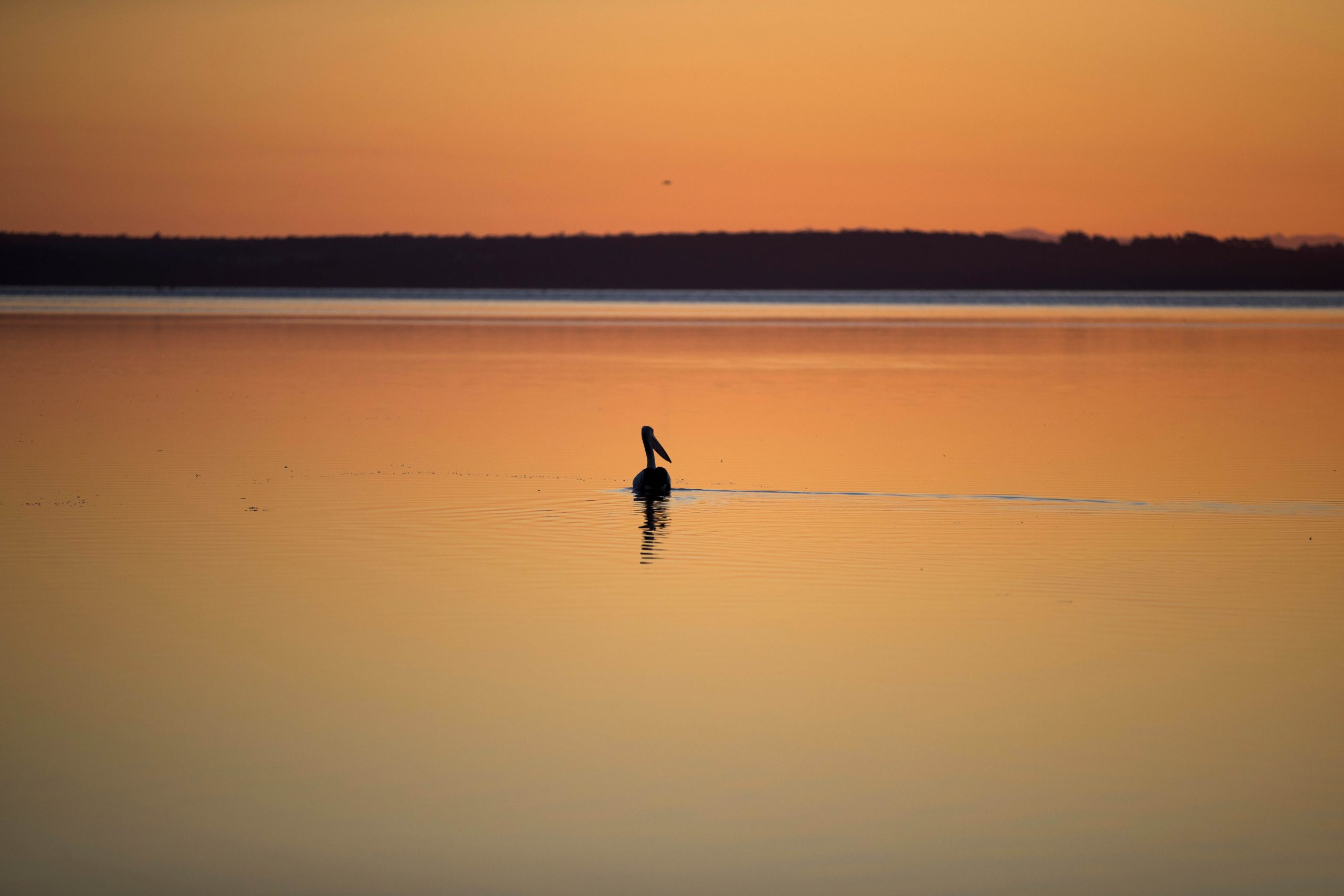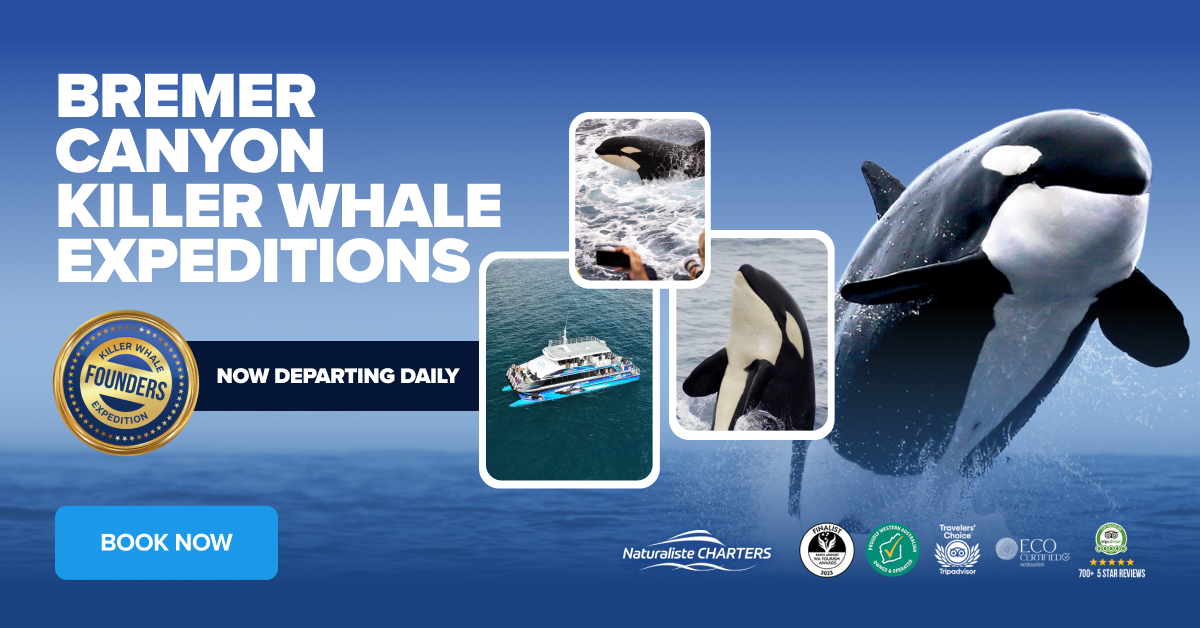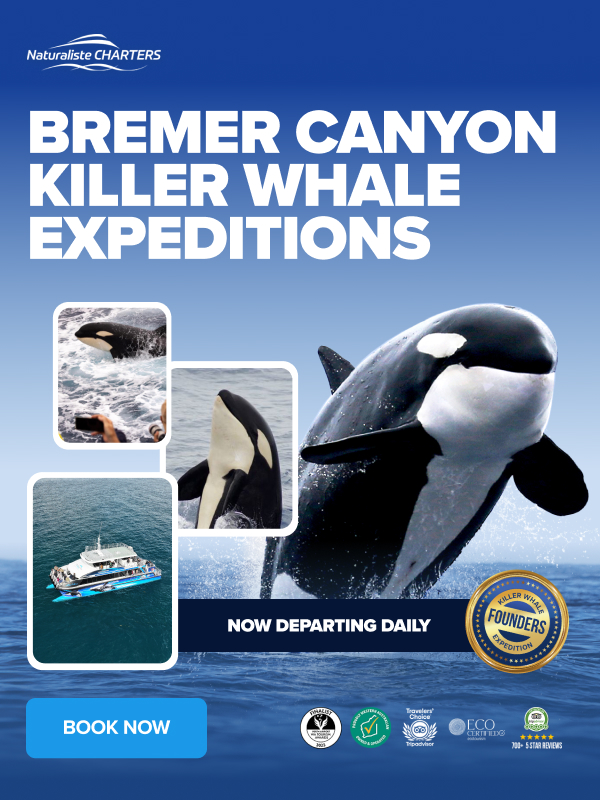Today’s expedition really had it all – a long weekend, sunny skies and calm seas, and orca all day. We sighted killer whales as soon as we arrived in the deep waters of the canyon. A small pod surfaced directly ahead of us. Day made.
The pod seemed very relaxed, in no hurry as they hung just below the surface, surfacing unhurriedly at intervals. A large school of pelagic fish boiled just below the surface and jumped clear of the water. Our keen fishermen on board speculated species, with blue mackerel and small bluefin tuna being the most popular bets. Researchers have recently reported bluefin tuna being hunted by killer whales at this location, but today we saw little evidence of oil slicks or behaviour to indicate hunting.
We enjoyed the spectacular sight of the pod surfacing at regular intervals, so close to our vessel we could hear their whooshing exhalations as they did so. Each individual was clearly visible beneath the surface too thanks to the calm conditions. Calls of “coming up” filled the air as the pod made each appearance.
Further out, another blow caught our attention, this one much larger and angled across the surface. A sperm whale, as big as a bus, logged gently on the surface. Likely to have been a kilometre beneath our keels just minutes before, and for on average 45 minutes to an hour, surface time for sperm whales serves important purpose.
The peaceful scene before us as the giant breathed with large rythmic blows gave no indication of the astonishing feats of endurance it accomplishes every day. Despite being an air breather, sperm whales do these deep dives day in, day out, repeating the dives a number of times a day. So the constant question we ask ourselves is: how do they do that? Sperm whales dive deep for one reason only, because there’s some payback in terms of a food resource. But this is a challenging way to make a living.
The most immediate problem is the extreme, crushing pressure. At 1000m down, a sperm whale experiences 100 times the pressure that they do at the surface, enough to completely compress the air in their lungs. To avoid this, they have rib cages that can fold down, collapsing their lungs and reducing air pockets. Then, right before diving, these mammals exhale 90% of the air in their lungs. This also reduces their buoyancy, making it easier to dive.
But that introduces a new problem. With little oxygen in their lungs, the whales have to be pretty thrifty when it comes to using the gas on their dives. To reduce oxygen use, diving mammals can stop their breathing and shunt blood flow from their extremities to the brain, heart, and muscles. They also shut down digestion, kidney and liver function and lower their heart rate. The animals also adapt their behaviour to conserve oxygen by reducing how much they move. When a sperm whale sounds, raising tail flukes skyward, it then gracefully glides downward without moving a muscle. Their empty lungs also reduce their buoyancy, making it easy to sink rather than swim.
It’s not enough to just be stingy with oxygen though. Once they’re in deep water, sperm whales have to hunt. For that, they need to have oxygen.
Fortunately, they have some in storage, in their blood and muscles. Marine mammals have a higher percentage of oxygen-storing red blood cells than most mammals. They also have a high blood-to-body-volume ratio. In other words, they really just have a bigger tank than we do.
Like all mammals, the whales’ muscles contain a protein called myoglobin that stores oxygen and gives meat its red colour. Myoglobin is ten times more concentrated in the muscles of diving animals than it is in human muscles, so much so that their flesh appears almost black. We watched the giant sound, awed at the thought it would soon be hunting in a landscape less well mapped than the surface of the moon.
We turned our attention to the same small orca family, now joined by another pod. We watched with interest as they picked up their pace and began to travel quickly, however nothing that we could see eventuated from this sudden surge of activity.
We diverted briefly as we caught sight of two more sperm whales resting on the surface, blowing regularly as they prepared for their next foray in search of squid. We enjoyed the sight of these ocean giants as they rested peacefully. This was a special moment for one of our guests, as she was a witness as the last sperm whale was brought to the whaling station at nearby Albany in November 1978. What an incredible feeling to now see three live sperm whales in the same waters.
Our killer whale “pod of the day” were still close by, and we rejoined their company as the sperm whales sounded. They remained content to travel with us alongside. Were we accepted as a more clumsy, noisy member of their pod? Or were we just adding interest to their daily traverse of their southern ocean home? Either way, all on board were left with an incredible sense of privilege that a pod of wild killer whales, of their own volition shared their afternoon with us.
It was time to turn into the lowering sun and head for home. But there was one more diversion to make first. A sunfish had been sighted, also making the most of the calm sunny surface waters to warm up after foraging dives to the cold canyon depths. A welcome escort from a pod of bottlenose dolphins as we reached the coast and a final stop at Glasse Island to visit the Australian Sea Lion colony topped off another amazing day on the southern ocean.
Until tomorrow,
The Bremer Canyon Crew

